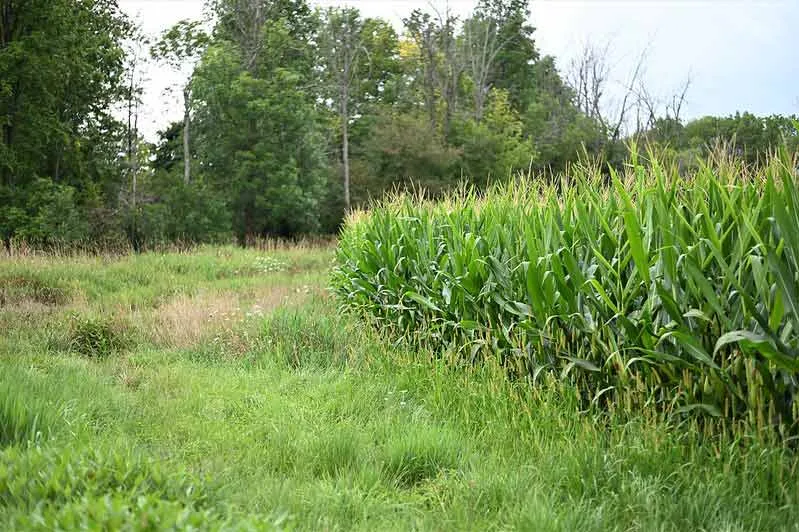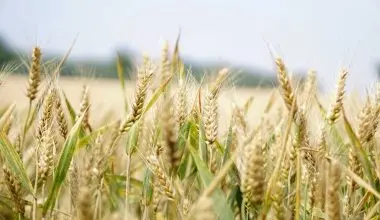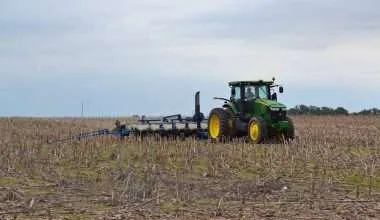Table of Contents Show
Navigation:
How does biodiversity relate to farming?
Importance of Biodiversity in Agriculture
Agricultural Practices to Improve Biodiversity
Benefits of Biodiversity in Agriculture
What is Biodiversity?
Biodiversity is the scale on which we measure the variety in ecosystems, genetic, and species levels. It helps us to determine the variability on Earth. This variability is important, as it allows us to keep ecosystems, environment and their relationship in check.
Similarly, biodiversity is also measured and manipulated in agriculture. Some have claimed increased profits and others claimed reduced yields. There’s one thing we can be sure of, improving biodiversity does make your farm more sustainable.
Biodiversity is crucial in boosting productivity of ecosystems. It becomes a system where each species within ecosystems plays an important role in contributing to health of the farm.
Read More: Major Threats and Solutions to Biodiversity
How does biodiversity relate to farming?
Increasing use of land for agriculture is said to harm biodiversity. However, if biodiversity is given careful consideration and importance while setting up a farm, it can actually prove to increase agriculture production.
Farmers usually don’t consider the negative impact of conventional farming on the evolution of biodiversity, as they choose to maximize profits.
If farmers choose to consider biodiversity into the equation of agriculture they may go onto make crops with better yields, as well as save the environment from taking damage.
Importance of Biodiversity in Agriculture
The food products that we eat every day come from agricultural biodiversity being practiced throughout the world. Biodiversity forms the basis for diverse food systems. It has allowed farming systems to evolve since the inception of agriculture 10,000 years ago.
Biodiversity in agriculture includes all components involved in promoting diversity of food products and agriculture. It includes genetic resources of crops, wild plants harvested and managed for foods, trees on farms, rangeland species, pastures, and lastly medicinal plants.
Agricultural biodiversity helps to provide humans with foods, raw materials for goods like cotton, wool, wood, fuel, and the roots of wild plants are used for medicines. They also help to become a source of biofuel.
The process of agricultural biodiversity also helps to provide valuable services to ecosystems.
These ecosystem services include soil and water conservation, maintenance of soil fertility, conservation of microbes, and protection of pollinators to carry out plant pollination. All of these are important, not just for the constant supply and production of food, but also for human survival.
Additionally, the genetic diversity in agriculture helps to make species be more resilient to climate change and more adapted to changes in the environment.
This may include high temperatures, frosts, droughts, and waterlogged areas. Furthermore, they also become resistant to various diseases, insects, and parasites.
Agricultural biodiversity encompasses economic, socio-cultural, and environmental elements. All domesticated crops and animals are a result of proper management of biodiversity. It is constantly responding to various new challenges to maintain and increase productivity under the increased pressure of growing population and varying conditions.
The biodiversity in agriculture is essential to satisfy human needs for food and security of livelihood.
Biodiversity interacts with food and nutrition to deal with several issues.
It helps to provide food security, nutrition, and well-being for a variety of animals and plants (both domesticated and wild). It serves as a safety net to households that become vulnerable during times of crisis, provides an income opportunity of income to poor farmers, and helps to sustain productive agricultural ecosystems.
There must be a coping mechanism available for indigenous populations, particularly for the most vulnerable people who have little access to formal employment, land, or even market opportunities.
Genetic diversity provides a basis for crop improvement. Farmers have converted wild ancestors of many of fruiting plants into productive varieties that feed the world today.
Agricultural Practices to Improve Biodiversity
1. Conservation Tillage
Conservation tillage aims to minimize the disturbance of soil, by employing tools that can turn over the soil lightly or hardly at all in many cases.
This practice allows crop residue to remain on the surface, reducing the opportunity for soil erosion. The practice of conservation tillage has started to increase on farms.
The main objective is to build organic matter in the soil that will help to promote biodiversity.
2. Planting Cover Crops

Cover crops are planted by farmers in between the cash crop harvests. The goal is to plant crops that recycle nutrients back into the soil.
Crops like radishes or rye; assist in conserving soil, preventing soil erosion, and replenish lost nutrients and provides a number of benefits to the soil for future crops.
Cover crops also aid to provide a habitat for birds and insects which are an important component of biodiversity.
3. Land Conservation
Farmers in United States have started receiving payments from the government to enroll portions of their farmlands into the Conservation Reserve Program.
This encourages farmers to make environmentally sensitive lands from agricultural production and plant species that will then help to improve environmental health and quality.
These lands can then also be used to provide shelter for wildlife and also to improve water quality.
4. Planting Buffer Strips

Buffer strips are wide strips of land, between crop fields, that aid in preventing soil erosion along with water runoff.
These strips are usually grasslands and play an important role in maintaining as well as promoting biodiversity by providing a habitat for animals and birds.
This is particularly beneficial in areas that have hilly terrain. This is why buffer strips are mostly located on edges of terrace farms.
Benefits of Biodiversity in Agriculture
Healthy agricultural biodiversity results in many benefits like:
- Clean and safe water supply
- Protection of soil
- Recovery of nutrient
- Provision of food
- Provision of medicine
- Availability of wood products
- Much more diverse wildlife
- Future resources and their protection
- Maintenance of climate
Biodiversity is choosing to give us these services for free. The cost of replacing these would seem impossible or relatively expensive. Therefore, it is necessary to shift towards a more sustainable future.
Read more: Pros and Cons of Applying Biotechnology in Agriculture
Conclusion
Humans since the beginning of the domestication of plants and animals have used a rich diversity of wild species and altered landscapes and environments to facilitate agriculture. The challenges with agriculture have always been to manage it in a way that it is sustainable, ensuring that future generations can also avail these resources.
In the face of changes, consumers and policymakers need to do their part to ensure that agricultural producers are provided with the right incentives to be able to adopt sustainable agricultural practices.
Individually, people need to be educated about the consequences of food choices. We can be very sustainable if steps are taken in the right direction.
If we choose to create sustainable agricultural systems, preserve biodiversity, and ecosystems are serviced globally; we can feed the world and also ensure constant resources for future generations.
Environmental security and the wellbeing of humans will prevail if we tackle this challenge collectively.






